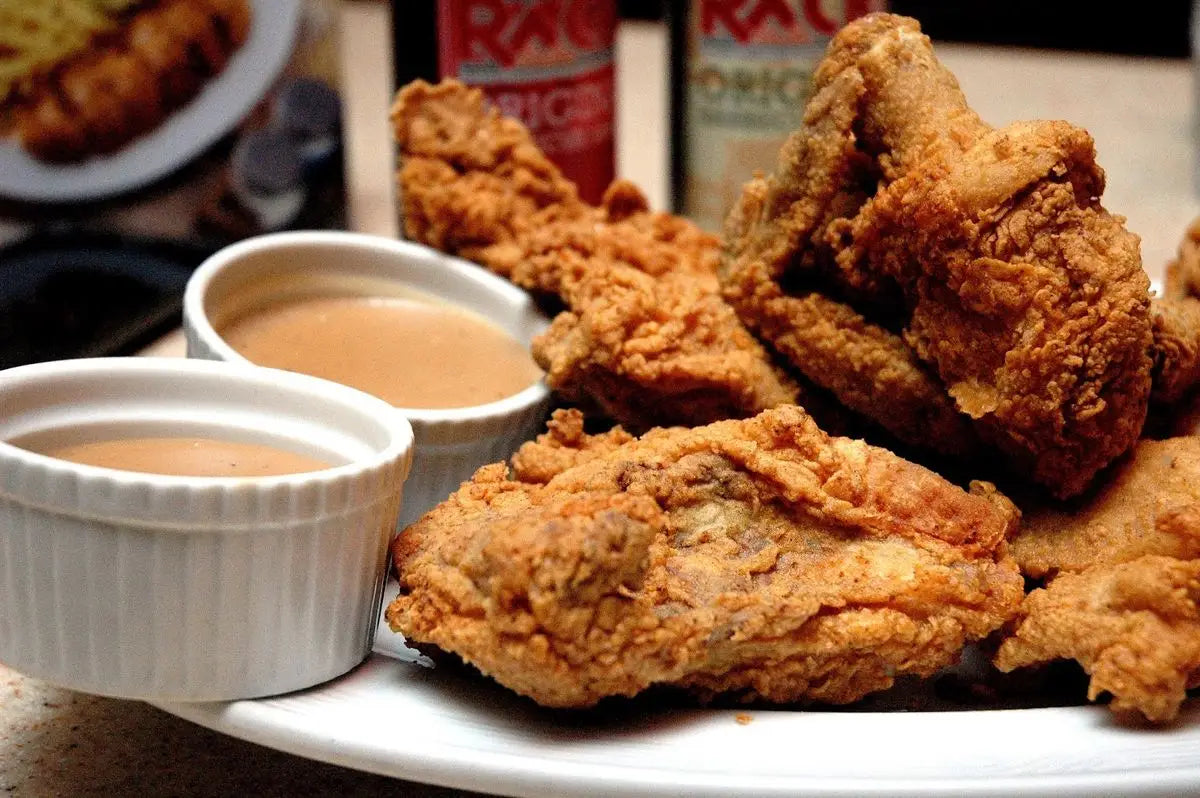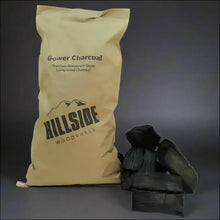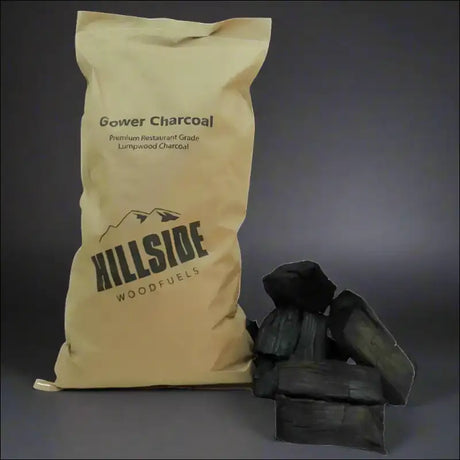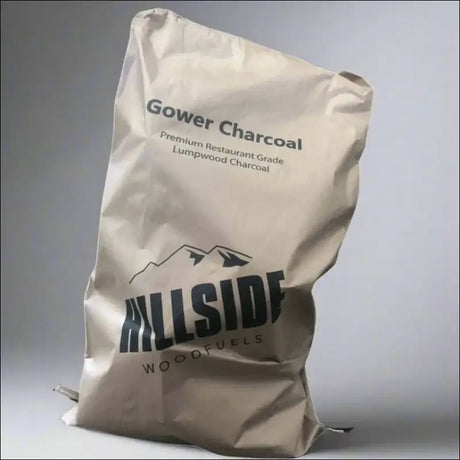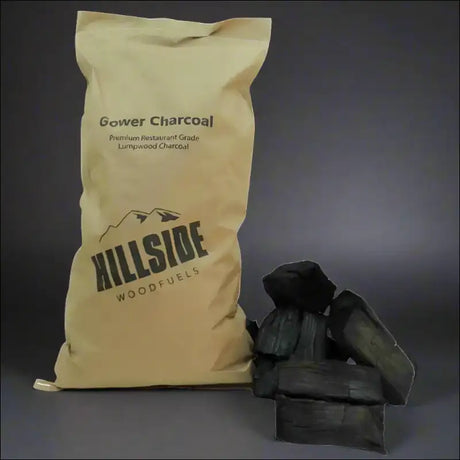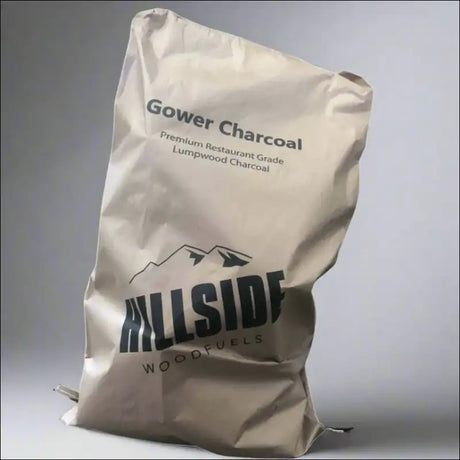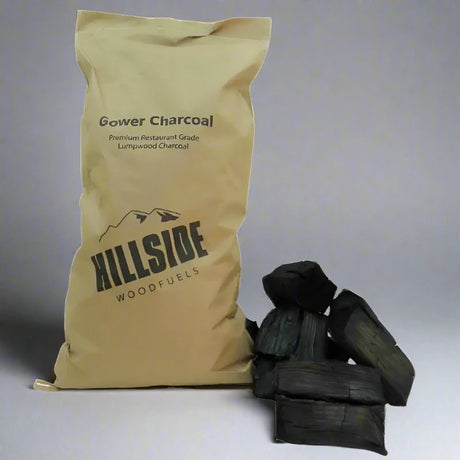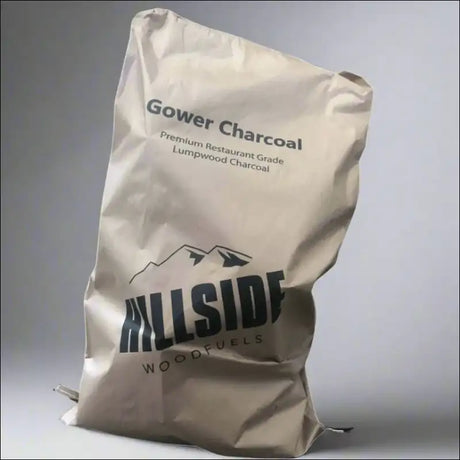Get ready to explore the sizzling world of outdoor cooking! When it comes to barbecuing, grill masters passionately debate the merits of charcoal versus wood. This article takes a closer look at the grilling experience, examining the unique features of different grill types, the art of charcoal grilling, essential tools to elevate your skills, and the distinct flavors that charcoal and wood impart. You'll also discover practical tips to become a grilling pro.
Key Takeaways
- Charcoal grills offer a distinct, smoky flavor and high temperatures ideal for searing, but require more effort for lighting and temperature control.
- Mastering charcoal grilling involves using chemical-free methods for lighting coals, preheating the grill properly, and understanding direct vs. indirect cooking techniques.
- The right grilling tools, including quality designs and UL certified equipment, can significantly improve the grilling experience and safety.
- While charcoal provides a unique taste, adding wood chips can introduce a smoky complexity to the flavor profile, balancing taste with convenience.
- Ensuring pre-grill seasoning, maintaining consistent temperature control, and accessorizing the grill are key factors for achieving grilling success.
Understanding the Grilling Experience

Charcoal Grills: A Primal Touch
Cooking over a charcoal grill connects us to an ancient tradition of preparing food over an open flame. The excitement of charcoal grilling comes from its ability to get extremely hot. This high heat sears in the juices of a thick steak or crisps the skin on tender chicken perfectly. The distinctive smoky flavor that charcoal adds is unforgettable. For many people, this smoky taste defines the quintessential summer experience.
Charcoal grilling does require a bit more finesse than other methods. Mastering the art of the flame means understanding how to light the coals efficiently and manage the heat. Here's a simple list to help us get started:
- Use a chimney starter for chemical-free ignition.
- Allow the grill to preheat with the lid closed for 10-15 minutes.
- Arrange the coals for direct or indirect cooking depending on the dish.
While the initial setup and cleanup might be more involved, the results are well worth the effort. The satisfaction of grilling over charcoal is not just in the flavors produced, but also in the primal joy of tending the fire.
Whether we're seasoned grill masters or novices looking to improve our technique, the journey of charcoal grilling is as rewarding as the delicious meals it creates. Let's embrace the challenge and the charm of this timeless cooking style.
Gas Grills: Convenience and Control
We've found that gas grills strike a perfect balance between ease of use and cooking precision. They start quickly with the push of a button, offering an immediate and reliable heat source. The ability to adjust the flame with a simple knob turn allows us to maintain consistent temperatures throughout the cooking process.
Convenience isn't the only advantage of gas grills. They're also known for their even heating, which is essential for a variety of cooking techniques. Here's a quick list of features that we consider when selecting a gas grill:
- Precise temperature controls
- Integrated thermometers
- Side burners for additional cooking space
- Warming racks to keep food at the perfect temperature
- Rotisserie kits for even cooking
While gas grills may lack the smoky flavor that charcoal provides, this can be mitigated by adding wood chips or chunks. They do tend to be more expensive upfront, but the investment pays off in the long run with features that enhance the grilling experience.
We appreciate the minimal mess and ease of cleaning that comes with gas grilling. It's a straightforward process that doesn't involve the ash cleanup associated with charcoal grills, making it a hassle-free option for those of us who prefer to spend more time enjoying our food than cleaning up after it.
Electric Grills: The Clean and Easy Option
We've come to appreciate the simplicity and convenience of electric grills. They're the go-to for those of us who prioritize ease of use and quick preparation. Plug them in, and they're ready to cook in minutes, without the need for fuel or the wait times associated with charcoal or gas grills.
Consistency is another hallmark of the electric grill experience. They provide even heating and reliable results, which is especially beneficial for beginners or those of us who prefer not to fuss with temperature adjustments. Here's a quick comparison of grill types based on ease of use and maintenance:
- Electric Grills: High ease of use, low maintenance
- Charcoal Grills: Moderate ease of use, higher maintenance
- Gas Grills: High ease of use, moderate maintenance
While they may not deliver the smoky flavor that charcoal enthusiasts rave about, electric grills have a place in the heart of the modern griller. They're compact, often more affordable, and their portability is a boon for those with limited space or the desire to grill on the go.
Remember, the best grill for you is the one that fits your lifestyle and grilling preferences. Whether it's the quick-start convenience of electric, the rich flavors of charcoal, or the precise control of gas, there's a grill out there that's the perfect match for your culinary adventures.
Mastering the Art of Charcoal Grilling

Lighting the Coals Without Chemicals
When we gather around the grill, the anticipation of a flavorful meal begins with the ritual of lighting the coals. We eschew lighter fluid and other chemical starters, as they can leave an unpleasant taste on the food. Instead, we opt for natural methods that ensure the true essence of charcoal grilling shines through.
- Gather your supplies: charcoal, The RocketFire\u2122 Fire Starter, and grill tools.
- Arrange the coals for direct or indirect heat as desired.
- Light the coals using the fire starter, avoiding chemical-laden options.
Once the coals are glowing and covered with a fine ash, it's time to pour them onto the grate. We allow the grill to preheat for 10-15 minutes with the lid closed, ensuring the grates are hot and ready for the culinary magic to happen.
By mastering the art of lighting coals without chemicals, we not only protect the integrity of our food but also embrace a more authentic grilling experience.
Achieving the Perfect Preheat
We've all been there, standing by the grill, eager to start cooking, but the key to a successful BBQ begins with achieving the perfect preheat. It's essential to preheat your grill for 10-15 minutes with the lid closed to ensure that the grates are hot and ready for cooking. This step is crucial for a couple of reasons:
- It sanitizes the grill by burning off any residue from previous cooking sessions.
- It helps to prevent food from sticking to the grates.
By allowing your grill to reach the right temperature, you're setting the stage for even cooking and those beautiful grill marks that are the signature of a well-grilled meal.
Remember, patience is a virtue when it comes to preheating. A properly preheated grill can make the difference between good and great BBQ. Here's a simple checklist to follow:
- Open the lid and remove any old coals or ash.
- Place new coals and use The RocketFire™ Fire Starter for a chemical-free ignition.
- Close the lid and let the grill come to temperature, checking after 10-15 minutes.
- Look for smoke as a sign that the grill is ready.
Following these steps will ensure that your grill is in the best condition for cooking, and you'll be rewarded with delicious, evenly cooked food.
Direct vs. Indirect Cooking Methods
When we grill, choosing the right cooking method is crucial for the perfect meal. Direct cooking is our go-to for foods that need high heat and quick cooking, like steaks and burgers. We place the food right over the coals, trapping heat and smoke under the lid for that ideal sear and juicy interior.
Conversely, indirect cooking suits foods needing longer, gentler heat, such as roasts or whole chickens. We set these on the grill's cooler side, opposite the coals, and let the lid's closed environment do its magic, resulting in tender, flavorful dishes.
Here's a quick guide to help us decide which method to use:
- Direct Cooking: Steaks, burgers, thin cuts
- Indirect Cooking: Roasts, whole chickens, thick cuts
Lumpwood charcoal is our choice for a pure wood flavor and clean ignition, offering versatile grilling experiences. We always opt for charcoal with high wood content, minimal sparks, and diverse sizes for optimal performance and flavor infusion. It's fun to experiment with different wood types for those unique smoky profiles.
Enhancing Your Grill with the Right Tools

The Importance of Quality Design in Grilling Tools
When we talk about grilling, the significance of quality design in grilling tools cannot be overstated. High-quality materials like stainless steel, brass, and aluminum alloy not only ensure durability but also contribute to the overall safety and performance of the grilling experience.
It's essential to choose tools that are UL Safety Certified, as this certification guarantees that the products have been rigorously tested for safe and efficient operation. Here's a quick rundown of what to look for in grilling tools:
- Durability: Opt for tools made from high-grade materials.
- Safety: Ensure tools are UL Safety Certified.
- Design: Look for ergonomic features and ease of use.
- Warranty: Consider products with a satisfaction guarantee or warranty.
We believe that investing in premium tools not only enhances the grilling process but also elevates the taste of your food. By using 100% natural, sustainable Firelighters, you can achieve a superior BBQ experience that is ethically sourced and safe, without any unwanted tastes or smells.
Remember, the right tools can make a significant difference in your grilling success. They not only improve the ease and enjoyment of the cooking process but also contribute to the longevity of your grill, ensuring that it remains a centerpiece of your outdoor gatherings for years to come.
Safety First: Choosing UL Certified Equipment
When we gather around the grill, safety is paramount. Choosing UL Certified equipment ensures that our grilling tools meet rigorous safety standards. UL (Underwriters Laboratories) certification is a trustmark that signals to us that a product has been thoroughly tested for safety risks and found to comply with the established standards.
Here's why UL Certification matters for our grilling experience:
- It provides peace of mind knowing that the tools have been evaluated for potential hazards.
- UL Certified products are designed to prevent accidents and injuries.
- The certification process includes regular follow-up inspections to ensure ongoing compliance.
By investing in UL Certified grilling tools, we're not just buying a product; we're investing in our safety and the safety of our loved ones.
Remember, while the thrill of the flame is enticing, it's the assurance of safety that lets us enjoy the barbecue to the fullest. Let's make sure our equipment is up to the task.
Natual Wood Wool Fire Starter: A Game Changer
When we talk about revolutionizing the grilling experience, natural wood wool fire starters takes center stage. This innovative tool has transformed the way we light our grills, providing a quick and efficient method to ignite charcoal without the need for chemicals. Its high-quality design ensures a durable and reliable performance, which customers have come to appreciate.
- Ease of use
- Speed of ignition
- Chemical-free lighting
- Durability and reliability
Natural wood wool is not just a fire starter; it's a versatile tool that can also be used for seasoning your grill. By producing intense heat, it allows for an even and thorough burn-off of residue, preparing the grill for a perfect seasoning. This step is crucial for maintaining your grill and enhancing the flavors of your food.
With natural wood wool, we've seen a significant improvement in both the quality and ease of grilling. It's a must-have for any grill enthusiast looking to elevate their cooking game.
Remember, a well-seasoned grill is the foundation of great grilling. After using natural wood wool to season your grill, let it cool, and then it's time to enjoy the delicious results of your efforts. Whether it's meats or veggies, natural wood wool ensures your grill is ready to deliver those mouth-watering flavors we all crave.
The Flavor Debate: Charcoal or Wood?

The Unique Taste of Charcoal-Grilled Foods
When we gather around a charcoal grill, we're not just cooking; we're creating memories infused with the unmistakable aroma of smoke and the sizzle of meats. The unique taste of charcoal-grilled foods is not just about flavor, it's about an experience that gas or electric grills simply cannot replicate. The charcoal imparts a rich, smoky taste that is deeply embedded in the culture of outdoor cooking.
The high heat of charcoal grilling sears meats quickly, locking in juices and creating a tantalizing crust. This method of cooking is ideal for those who cherish the art of grilling and the distinct flavor profile it brings to the table.
Here's a quick list of the types of foods that benefit most from charcoal grilling:
- Steaks and burgers for a robust, smoky char
- Vegetables for a caramelized, earthy flavor
- Pizza for a crispy, artisanal crust
Each of these foods takes on a new dimension of taste when kissed by the heat of charcoal. As we master the art of charcoal grilling, we not only perfect our techniques but also enhance the flavors that make our meals truly unforgettable.
Adding Wood Chips for Smoky Complexity
When we explore the nuances of grilling, we often find ourselves asking, How do I use wood chips or wood chunks on my grill? The answer lies in the subtle art of infusing our food with that sought-after smoky flavor. Using wood chips or wood chunks can transform a simple meal into a gourmet experience, and either option will provide great results.
To achieve the best smoky flavor, it's essential to match the type of wood to the food being grilled. Different woods impart unique flavors, and finding the perfect pairing is part of the grilling adventure.
Here's a quick guide to some popular wood types and their flavor profiles:
- Applewood: Mild and sweet, ideal for poultry and pork
- Hickory: Strong and bacon-like, perfect for red meat
- Mesquite: Intense and earthy, best for bold dishes
- Cherry: Fruity and mild, complements most meats
Remember, patience is key when smoking with wood. It's not just about the heat; it's about giving time for the flavors to permeate and enhance the food. Whether you're using briquettes that can burn for up to 8 hours or premium logs for a shorter, intense session, the choice is yours. Embrace the process and let the smoke work its magic.
Balancing Flavor and Convenience
When we consider the grilling experience, we often find ourselves at a crossroads between the robust taste that charcoal enhances and the ease of use that other methods offer. Charcoal grilling requires a bit more finesse and attention, but the payoff is a distinct flavor profile that can't be replicated with gas or electric grills.
Charcoal isn't just for grilling meats; it can also add depth to beer, spirits, and cocktails, making it a versatile choice for those who enjoy crafting a sophisticated menu. Here's a quick list to help balance charcoal use with different types of dishes:
- Pair with barbecue for a classic smoky taste
- Complement spicy dishes to add another layer of flavor
- Offer a delightful contrast with vegetarian options
We must always strive to find the perfect harmony between the authenticity of charcoal grilling and the convenience of modern cooking methods. This balance allows us to cater to diverse tastes while still enjoying the process of grilling.
Tips and Tricks for Grilling Success

Pre-Grill Seasoning and Maintenance
Before we dive into the heat of grilling, it's crucial to ensure our BBQ grill is in prime condition. Seasoning your grill is not just a one-time affair; it's an ongoing process that enhances the flavor of your food and protects your grill. We always start by choosing our seasoning sauce, which could be anything from vegetable oil to a special blend of oils. This sauce will be the foundation of the seasoning process.
After the initial seasoning, we make it a habit to lightly coat the grill with oil after each use. This simple step prevents rust and maintains the non-stick surface, making our grilling more effortless and enjoyable. Here's a quick checklist we follow to keep our grill in top shape:
- Clear out any old ashes and debris
- Inspect for any signs of wear or damage
- Apply a generous coating of seasoning sauce to all interior surfaces
- Maintain the grill at 250-275 degrees Fahrenheit for seasoning to set
- Allow the grill to cool down before the next use
By taking the time to maintain our grill, we're not just preserving its condition, we're also committing to the quality of our grilled dishes. A well-seasoned grill is the secret to achieving those perfect smoky undertones that make our BBQs unforgettable.
Temperature Control for Consistent Cooking
We understand the importance of maintaining a steady temperature throughout the grilling process. Consistent heat is key to ensuring that every bite is as perfect as the last. To achieve this, we recommend using quality lumpwood charcoal, which offers consistent heat, aroma profiles, ethical sourcing, and burning characteristics. It's crucial to select the best lump charcoal for your needs, and visual cues along with FAQs can guide you in making the right choice.
By mastering temperature control, you can tackle multiple dishes simultaneously, ensuring each is cooked to perfection. Whether you're aiming for a low and slow smoke at 225F or a searing 750F, the right grill setup is essential. Look for features like a two-tier system, a cast iron top vent, and a slide-out ash drawer for easy cleanup.
Remember, the goal is to create an environment where heat is not just a fleeting guest but a reliable companion to your culinary journey. Here's a simple checklist to help you maintain temperature control:
- Opt for a grill with adjustable controls to fine-tune the heat.
- Use a grill with integrated thermometers for precise readings.
- Cook with the lid closed to trap heat and smoke for searing meats.
- Adjust airflow to control flames and prevent flare-ups.
- Keep a spray bottle of water handy for any unexpected flames.
With these tips in mind, you're well on your way to grilling success, where the only surprise will be the delightful flavors you've created.
Accessorizing Your Grill for Versatility
To truly elevate our grilling game, we must consider the accessories that can transform a simple grill into a versatile cooking powerhouse. Investing in the right accessories not only enhances our cooking options but also simplifies the entire process. For instance, a grill basket is perfect for delicate foods that might otherwise fall through the grates, while a pizza stone can turn your grill into an outdoor pizza oven.
Grill covers are essential for protecting our investment from the elements, ensuring that our grill remains in pristine condition for years to come. It's also worth exploring the various types of firewood and kindling to enhance our fires. As a guide to choosing and using firewood, consider species, dryness, and type. Kiln-dried wood burns best. If rain dampens our firewood, we just let it dry before the next use.
By mastering the use of these accessories, we can tackle any grilling challenge with confidence and serve up an array of dishes that will delight our guests.
Here's a quick list of accessories that can significantly boost your grill's versatility:
- Grill basket for small or delicate items
- Pizza stone for baking
- Rotisserie attachment for even cooking
- Smoker box for adding a smoky flavor
- Grill cover for protection
Remember, the key to grilling success lies not just in the technique but also in the tools we use. Let's make every grilling experience a memorable one.
Conclusion
In the debate of whether to BBQ with charcoal or wood, it's clear that both methods have their unique advantages and challenges. Charcoal grills are celebrated for their high heat capabilities and the distinct smoky flavor they impart to food, making them a favorite for searing meats to perfection. They are also relatively affordable and portable. However, they require a bit more skill to manage temperature and a longer preheat time, and cleanup can be messy.
Wood, on the other hand, can enhance the smokiness and offers a more traditional grilling experience, but it may not be as convenient as charcoal. Ultimately, the choice between charcoal and wood will depend on personal preferences, the desired flavor profile, and the level of convenience sought. For those who value a smoky taste and enjoy the process of grilling, charcoal might be the way to go, while others may opt for the ease of wood chips or chunks to complement a gas grill setup.
Frequently Asked Questions
What are the main differences between charcoal, gas, and electric grills?
Charcoal grills offer a primal grilling experience with a smoky flavor and high temperatures, ideal for searing. Gas grills provide convenience, easy temperature control, and additional features like side burners but lack the smoky taste, which can be enhanced with wood chips. Electric grills are clean, easy to use, and suitable for places where open flames are prohibited.
How can I light charcoal without using chemicals?
Use The RocketFire™ Fire Starter to light charcoal. It avoids the unwanted taste that lighter fluid can impart to your food. Once the coals are glowing and covered with ash, transfer them to the grill.
What is the best method to preheat a charcoal grill?
Allow your grill to preheat for 10-15 minutes with the lid closed. This ensures that the grates are hot and ready for cooking.
What are the differences between direct and indirect cooking methods on a grill?
Direct cooking involves placing food directly over the coals for quick cooking or high heat, while indirect cooking uses the space next to the coals for slower cooking, ideal for thicker cuts or smoking.
How does adding wood chips affect the flavor of grilled foods?
Adding wood chips to charcoal imparts a smoky complexity to the food, enhancing the flavor profile, especially when using gas grills that lack the natural smoky taste of charcoal.
What are some essential tips for maintaining and using a grill for the best results?
Pre-season your grill for maintenance, allow it to cool before cooking, and use precise temperature control for consistent results. Accessorize with quality tools like The RocketFire™ Fire Starter and UL certified equipment for safety and efficiency.

